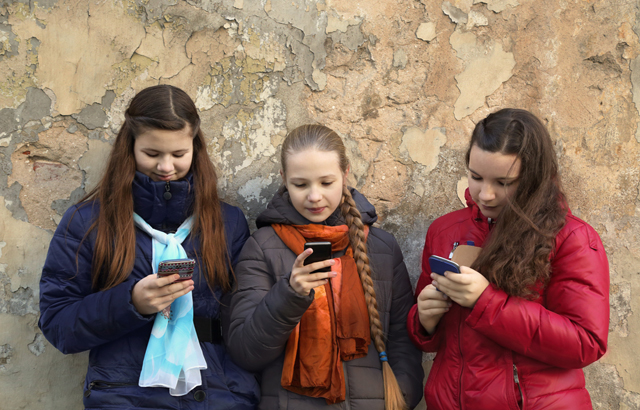Social media is a part of everyday life for most teenagers, with many dedicating large amounts of their online time to these networks. Research shows that teens tend to favor popular sites, including Facebook, Twitter and Instagram.
For much young children, however – those under the age of 13 – these networks tend to be out of reach because of age restrictions and suitability. But, as technology is introduced earlier and earlier, there is a growing need for child-friendly social networks, the kind that parent are happy to introduce to their kids.
Fortunately, there are now numerous solutions out there. Many of the most successful retain all the features that make Facebook, Twitter, Instagram and Pinterest so good, whilst also doubling down on online privacy and security (particularly appealing to moms and dads).
In this feature, we take a look at four of most popular and secure social networking sites for children under 13 years of age.
Kidzworld

Kidzworld is one of the most comprehensive social media platforms out there, offering everything from free online arcade-style games and safe chat rooms to the latest movie and TV reviews.
Children are invited to create profiles, make friends, play games and even win prizes. There’s the opportunity to read game reviews and cheats; to write blogs; create polls; and look up advice on health, style and career prospects.
Kidzworld promotes itself as a “safe moderated website”, adding that users can use chat forums and messaging to safely find and communicate with peers with similar likes and interests.
GromSocial
Most youngsters who are unable to sign up to popular social networks or find that their accounts have been disabled because “they have been found out” will probably sulk about their misfortune and look at ways of getting back on.
Others, like Zach Marks, will find alternative solutions. In this instance, Zach went about establishing his own child-friendly social network: GromSocial’ for younger children. He was 11.
The idea that Zach, now 15, came up with was a password-protected network where children can chat, share videos and get homework help. The bonus, for parents, is that the site is monitored live, 24/7, and can only be seen by adults if they have been approved as a parent of a user. Parents also receive regular emails detailing their child’s online activity.
PopJam
PopJam is a platform/app primarily aimed at children under the age of 13, specifically at 7- to 12-year-olds, which allows them to create content, follow different people, and even play games.
Since the app is catering to children and their safety is key, there are certain restrictions to their activities. They cannot communicate using private chats, nor can they upload photos that can reveal personally identifying information, their faces, or the faces of their friends without disguising them using stickers or drawings. The time to posting on the app is also restricted to 6am to 11pm so children can rest.
The app is COPPA- and GDPR-compliant as well as kidSAFE-seal-certified. PopJam employs moderators who curate and moderate the content available as well as guide the activities users partake in. Besides moderators, the app uses monitoring software and cooperates with multiple organizations that promote child online safety as well as law enforcement.
Messenger Kids

Messenger Kids is Facebook’s offering which works as an alternative to its more adult-centric messaging app and platform. It functions in much the same way its full-fledged older sibling does, allowing children to message and video call their peers.
The main difference is that parents remain in control through Messenger Kids Parent Dashboard. The dashboard allows you to review your child’s chat and contact histories as well as have an overview of whom they reported or blocked.
It will also give you access to the most recent videos and photos they sent and received, with the option to remove and report anything you deem inappropriate. And you can even download your child’s information from the app and remotely logged them out of the app on any device.
Final thoughts
There are multiple platforms you can choose from where your children should be safe while interacting with their peers. But its worth noting that you should always do your due diligence and see how the platforms handle the security and privacy of your children’s data and what other parents say about them. If your teen wants to use the more adult-geared social platforms you can use this handy website to see if they meet the age limits.
To learn more about dangers faced by children online as well as about how not only technology can help, head over to the Safer Kids Online platform.
Note: This article was updated on June 1st, 2020.





